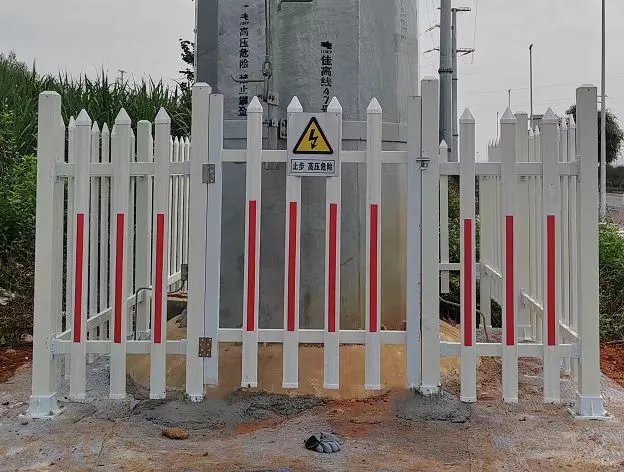loading...
- No. 9, Xingyuan South Street, Dongwaihuan Road, Zaoqiang County, Hengshui, Hebei, China
- admin@zjcomposites.com
- +86 15097380338
- Welcome to visit our website!
Exploring Current Trends in FRP Channel Pricing and Market Factors
Understanding FRP Channel Prices Factors and Trends
In today's rapidly evolving construction and manufacturing sectors, the demand for high-performance materials has surged. One such material that has garnered significant attention is Fiber Reinforced Polymer (FRP). Particularly, FRP channels offer unique advantages over traditional materials, making them crucial in various architectural and engineering applications. This article explores the factors influencing FRP channel prices and the trends shaping their market.
What are FRP Channels?
FRP channels are structural components made from polymer resins reinforced with fibers, commonly glass, carbon, or aramid. These channels are known for their strength-to-weight ratio, corrosion resistance, and longevity. Unlike traditional steel or aluminum channels, FRP channels are lightweight, resistant to chemical damage, and non-conductive, making them ideal for applications in harsh environments, such as chemical plants, marine settings, and wastewater treatment facilities.
Factors Influencing FRP Channel Prices
1. Raw Material Costs The price of FRP channels is significantly affected by the costs of raw materials, including the type of fibers used (glass, carbon, etc.) and the resin formulations. Fluctuations in the market prices for these raw materials can lead to variations in the overall cost of FRP channels.
2. Manufacturing Process The complexity and technology involved in the manufacturing process of FRP channels also play a pivotal role in pricing. Advanced manufacturing techniques, such as pultrusion or resin transfer molding, tend to be more expensive but yield higher-quality products. Manufacturers investing in cutting-edge technology can offer more reliable and durable FRP channels, justifying a higher price point.
3. Market Demand Increasing awareness of the benefits of FRP materials has led to heightened demand across various sectors, including construction, automotive, and aerospace. This rising demand can push prices upward. Conversely, if demand decreases, prices may stabilize or drop.
4. Regulations and Standards Compliance with industry-specific regulations and standards can affect production costs. Stricter safety and performance standards may necessitate more expensive raw materials or additional testing, impacting the final price of FRP channels.
frp channel price

5. Geographical Factors Local market conditions, including transportation costs, labor rates, and tariffs, can influence pricing. For instance, companies operating in regions with high labor costs may sell FRP channels at a premium compared to those in areas with lower operational expenses.
Current Trends in the FRP Channel Market
1. Sustainability There is a growing trend towards sustainable building materials in construction. FRP channels are often viewed as a more environmentally friendly option compared to traditional materials. As industries focus on reducing their carbon footprint, the demand for sustainable materials like FRP is likely to rise, potentially impacting pricing dynamics.
2. Technological Advancements Innovations in the manufacturing process are leading to higher quality FRP channels at competitive prices. Companies are investing in research and development to enhance the properties of FRP materials, including strength and thermal resistance. As these advancements emerge, the cost may decrease, making FRP channels more accessible to a broader audience.
3. Global Market Dynamics The globalization of trade has also affected FRP channel pricing. International suppliers can offer competitive pricing due to lower production costs in some regions. However, fluctuations in currency exchange rates and transportation costs can introduce unpredictability in pricing.
4. Customization and Versatility Custom-designed FRP channels tailored to specific applications are on the rise. This trend may lead to increased costs due to the added value of tailored solutions. However, the versatility of FRP materials often compensates for the initial expenditure through long-term savings in maintenance and durability.
5. Expansion of Applications As industries discover new applications for FRP channels, demand is likely to grow. This expansion can lead to diversification in pricing structures, influenced by the specific requirements of different applications.
Conclusion
The pricing of FRP channels is shaped by a complex interplay of material costs, manufacturing processes, market demand, and regulatory frameworks. As industries increasingly turn towards sustainable and innovative materials, FRP channels are poised for continued growth. Understanding the factors influencing their prices can help stakeholders make informed decisions and adapt to emerging trends in this dynamic marketplace. As we look to the future, it is clear that FRP channels will play an integral role in the construction and manufacturing sectors, offering both performance benefits and economic advantages.
-
The Rise of FRP Profiles: Strong, Lightweight, and Built to LastNewsJul.14,2025
-
SMC Panel Tanks: A Modern Water Storage Solution for All EnvironmentsNewsJul.14,2025
-
GRP Grating: A Modern Solution for Safe and Durable Access SystemsNewsJul.14,2025
-
Galvanized Steel Water Tanks: Durable, Reliable, and Ready for UseNewsJul.14,2025
-
FRP Mini Mesh Grating: The Safer, Smarter Flooring SolutionNewsJul.14,2025
-
Exploring FRP Vessels: Durable Solutions for Modern Fluid HandlingNewsJul.14,2025
-
GRP Structures: The Future of Lightweight, High-Performance EngineeringNewsJun.20,2025
